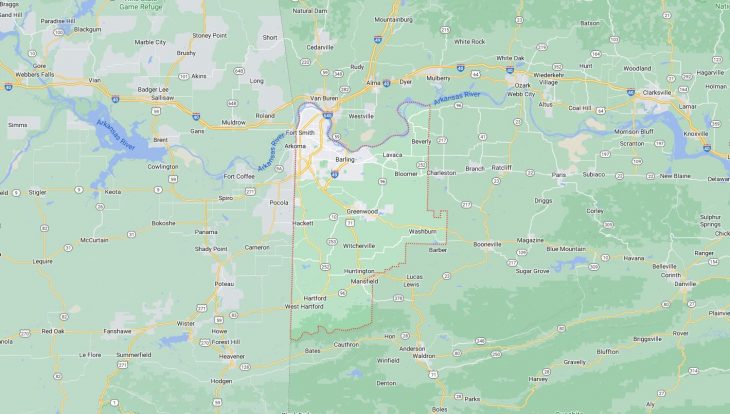Cities and Towns in Sebastian County, Arkansas
Founded on January 6, 1851, Sebastian County is one of 75 counties in the state of Arkansas. Historically, Sebastian County was formed from Crawford and Scott. The city of Fort Smith, Greenwood is the county seat. With FIPS code of 131, Sebastian County has a population of 128,400 and area of 546.04 square miles (1,414 km²).
List of all cities in Sebastian County, AR alphabetically
| City/Town | Postal Code | Area Code |
| Barling, AR | 72923 | 479 |
| Bonanza, AR | 72916 | 479 |
| Central City, AR | 72941 | 479 |
| Fort Chaffee, AR | 72905 | 479 |
| Fort Smith, AR | 72901 | 479 |
| 72902 | 479 | |
| 72903 | 479 | |
| 72904 | 479 | |
| 72905 | 479 | |
| 72906 | 479 | |
| 72908 | 479 | |
| 72913 | 479 | |
| 72914 | 479 | |
| 72916 | 479 | |
| 72917 | 479 | |
| 72918 | 479 | |
| 72919 | 479 | |
| Golden Ventures, AR | 72919 | 479 |
| Greenwood, AR | 72936 | 479 |
| Hackett, AR | 72937 | 479 |
| Hartford, AR | 72938 | 479 |
| Huntington, AR | 72940 | 479 |
| Lavaca, AR | 72941 | 479 |
| Midland, AR | 72945 | 479 |














































